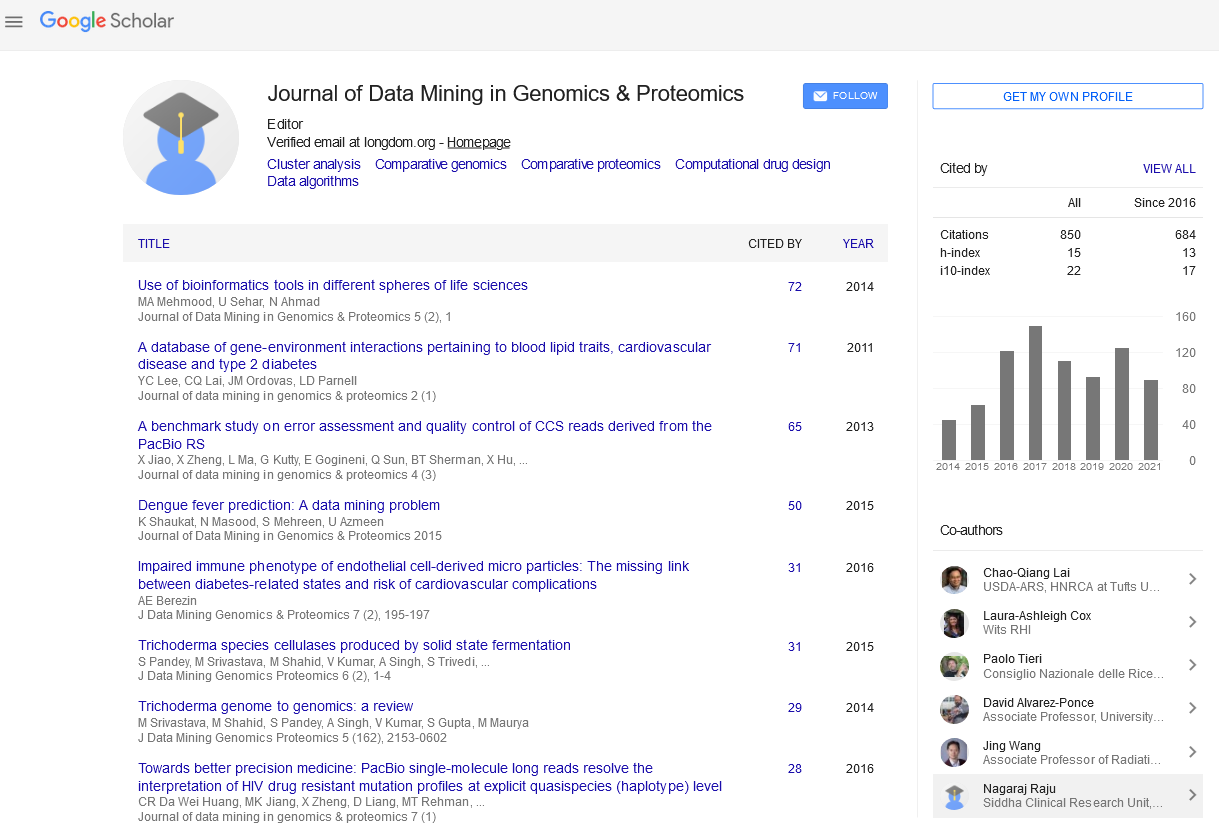PMC/PubMed Indexed Articles
Indexed In
- Academic Journals Database
- Open J Gate
- Genamics JournalSeek
- JournalTOCs
- ResearchBible
- Ulrich's Periodicals Directory
- Electronic Journals Library
- RefSeek
- Hamdard University
- EBSCO A-Z
- OCLC- WorldCat
- Scholarsteer
- SWB online catalog
- Virtual Library of Biology (vifabio)
- Publons
- MIAR
- Geneva Foundation for Medical Education and Research
- Euro Pub
- Google Scholar
Useful Links
Share This Page
Journal Flyer

Open Access Journals
- Agri and Aquaculture
- Biochemistry
- Bioinformatics & Systems Biology
- Business & Management
- Chemistry
- Clinical Sciences
- Engineering
- Food & Nutrition
- General Science
- Genetics & Molecular Biology
- Immunology & Microbiology
- Medical Sciences
- Neuroscience & Psychology
- Nursing & Health Care
- Pharmaceutical Sciences
Editorial - (2021) Volume 12, Issue 2
Overview of DNA Sequencing methods
Sier Martin*Received: 04-Mar-2021 Published: 25-Mar-2021, DOI: 10.35248/2153-0602.21.12.e132
Summary
DNA sequencing is the way toward deciding the grouping of nucleotides inside a DNA particle. Each organic entity's DNA comprises of a remarkable grouping of nucleotides. Deciding the grouping can help researchers analyze DNA between organic entities, which can help show how the creatures are connected. This implies that by sequencing a stretch of DNA, it will be feasible to know the request in which the four nucleotide bases – adenine, guanine, cytosine, and thymine – happen inside that nucleic corrosive particle.
The need of DNA sequencing was first made clear by Francis Crick's hypothesis that the succession of nucleotides inside a DNA atom straightforwardly affected the amino corrosive groupings of proteins. At that point, the conviction was that a totally sequenced genome would prompt a quantum jump in understanding the natural chemistry of cells and organic entities. Present day DNA sequencing comprises of highthroughput strategies which permit whole DNA arrangements to be found very quickly.
This innovation has permitted numerous organizations to begin offering at-home DNA testing. Large numbers of the "results" found by these tests are just connections found between a hereditary variation and a specific condition.
Notwithstanding, innovation has additionally permitted researchers to test the DNA of numerous organic entities to more readily comprehend developmental connections. An article titled “Nitrogen Base Sequence Analysis and Characterization of Mutations in Gene Coding Region That Can Lead to High Levels of Resistance in Tuberculosis Patients in Jayapura, Papua Province-Indonesia ” which was written by Prof. Yohanis Ngili which discusses that The disease of tuberculosis in Papua Province, Indonesia. The manuscript revels the aspects of mutations in rpoB512 gene results in causing of high resistance of M. tuberculosis. Most of the mutations occurring in the β-subunit RNA polymerase are found in region I (the position of amino acid residues 505 to 537) and region II (the position of amino acids 562 to 572).
These results of analysis suggest that Amino acid changes in this residue caused the greatesteffect on the M. tuberculosis phenotype on the Mtb isolate in Papua Province of Indonesia. Another article by same Prof. Yohanis Ngili entitled Genetic Mutations in the Papuan Human Mitochondrial Genome: Studies in Gene Control Regions and Gene Coding Using REPLI-g. This manuscript is all about the Study Analysis andDNA mutations in Papuan humans with comparison of several world ethnicities both in coding region and gene control region.
This manuscript revels that mutation analysis shows that there were several mutations in mtG region fragments and most of the mutations outside the D-loop regions are in the ATP6 region and the results of analysis of gene coding region provides that there are enough variability of mutations between tribes inPapua which are quite high and this study is quite interesting to examine more deeply on bioetnoanthropological studies.
Uses of DNA Sequencing
Conventional, chain-end innovation and HTS techniques are utilized for various applications today. Sanger sequencing is presently utilized generally for once more beginning sequencing of a DNA atom to acquire the essential grouping information for a living being or quality.
The generally short 'peruses' falling off a HTS response (30-400 base sets contrasted with the almost 1,000 make the whole genome of a creature from HTS techniques alone. Every so often, Sanger sequencing is likewise expected to approve the consequences of HTS.
Citation: Martin S (2021) Overview of DNA Sequencing methods. J Data Mining Genomics Proteomics. 12:e132
Copyright: © 2021 Martin S. This is an open-access article distributed under the terms of the Creative Commons Attribution License, which permits unrestricted use, distribution, and reproduction in any medium, provided the original author and source are credited.


